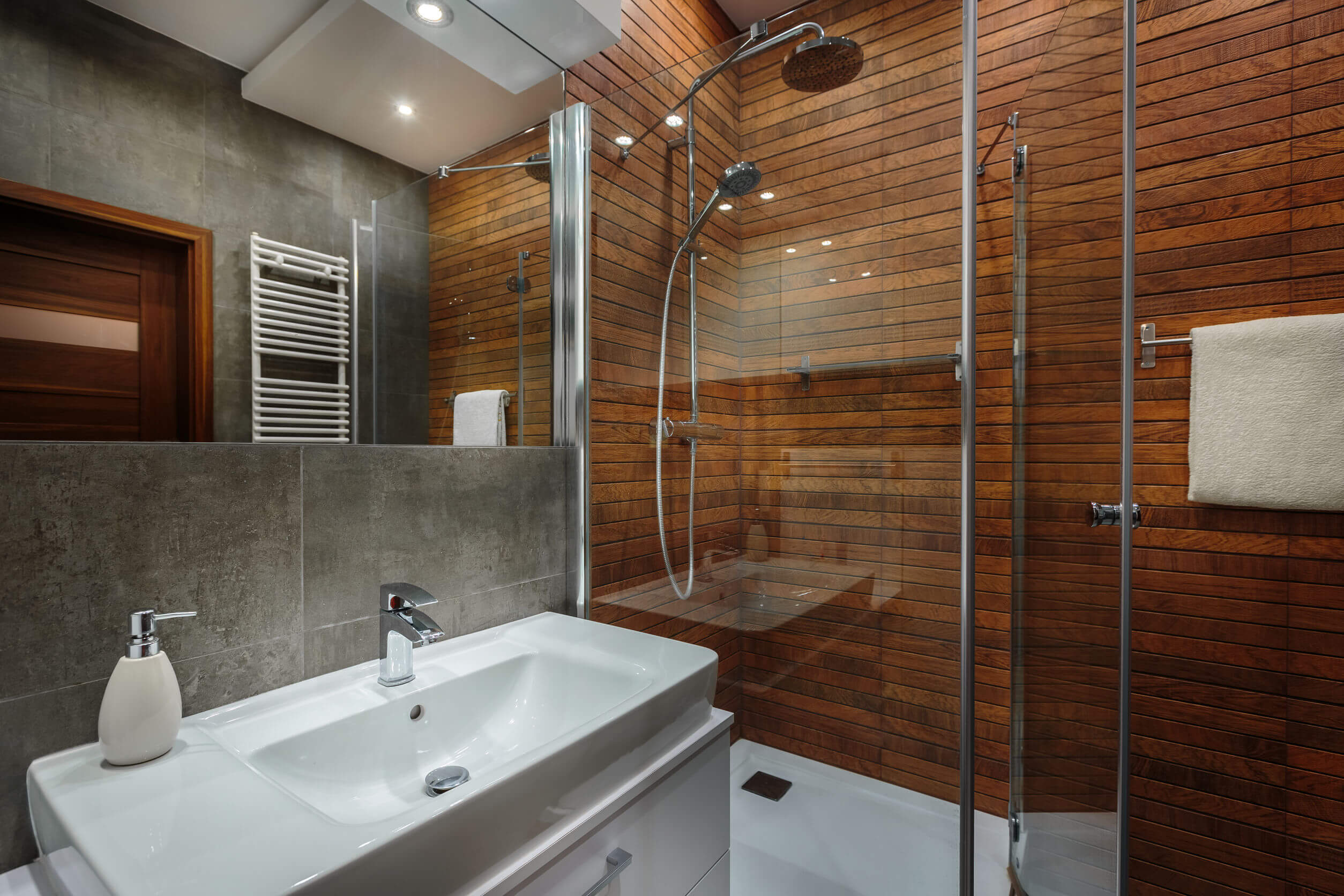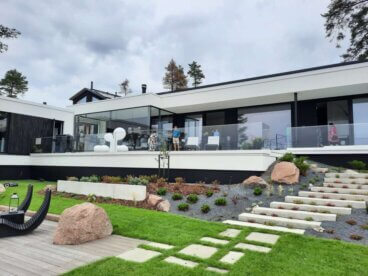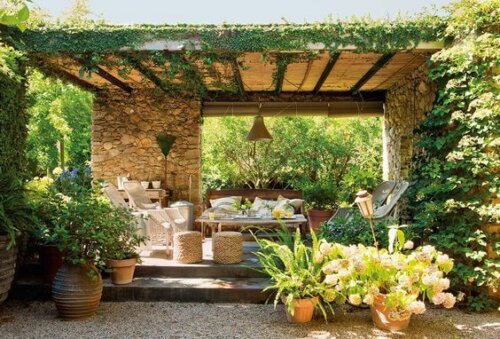Wood Paneling for Walls

The infrastructure of your home doesn’t just have to be covered by paint or plaster. There are also other interesting formulas, such as using wood paneling for walls. This is a fabulous component and it provides a feeling of warmth to any room.
Generally, we always opt for a traditional look using plaster on our interior walls, either with or without exposing brickwork. There’s nothing wrong with this and there’s no doubt that it’s versatile and acceptable. However, if you want a different approach then wood paneling is a better alternative.
All you have to remember is the decor style that prevails in your home interior will influence whether wood paneling will complement it or not. Fundamentally, it’s your goal to mix harmony with aesthetic functionality and combine them in a pleasing way.
Wood paneling: an ecological and sustainable resource

Wood is a natural product that’s easy to work with and provides aesthetic benefits. It’s still hugely popular in home interiors and although typically, we use it in furniture, why not use it in other areas of the home too?
The ecological factor surrounding wood is paramount since it contributes to sustainability and sets aside other materials of industrial origin. Instead of contributing to pollution, wood has the possibility to change this dynamic and collaborate with the environment.
Nowadays, interior designers work on the concept of sustainable and healthy housing. It’s about introducing the concept of new lifestyles within an organic identity where you only use natural products.
Types of wood paneling finishes
When considering wood wall coatings for interiors, it’s important to emphasize that this is evolving all the time. As such, we’re going to delve deeper into three relevant and current wood paneling typologies below:
- Wide-width wooden planks: considered the most widely used and a standard model because this covers large surfaces. The idea is that the panels cover all possible gaps, even the most remote corners. It’s a great way of dressing the walls and the ceiling and as a result, directly transforming the interior image.
- Embossed coatings: different types of embossing include horizontal or vertical stripes at different heights or by configuring cubic pieces to protrude in 3D. This means we can highlight any porous pieces that have an apparent texture.
- Juxtaposed planks: great for informal styles, large areas, and rooms for young people, planks juxtaposed with each other create dynamism. In other words, juxtaposed planks look as if they’re extracted from different shades of wood.
Best for warmth

We all know what using wood can achieve in interiors, and when we use it vertically on the walls then it enjoys prominence. It also generates a feeling of warmth.
Moreover, heating is reinforced thanks to this material. Wood paneling on the walls favors the durability of the temperate climate in the home. For this reason, this material also provides cost savings over the long term too.
In addition, and from an objective point of view, wood helps us to generate a welcoming and calm feel. There are different shades to choose from, from the darkest to the lightest, enriching your whole home.
Other benefits of wood paneling
So far we’ve seen just some of the qualities of wood paneling for walls, both functional and aesthetic. However, we have to point out other benefits too.
One of these is resonance reduction. Wood reduces sound and prevents reverberation. Although it may not seem obvious, this represents an interesting solution to environmental stress.
The combination, when you combine it with other decorative resources isn’t difficult to establish. Wood paneling gives you the possibility to achieve truly significant harmonic stability.
The infrastructure of your home doesn’t just have to be covered by paint or plaster. There are also other interesting formulas, such as using wood paneling for walls. This is a fabulous component and it provides a feeling of warmth to any room.
Generally, we always opt for a traditional look using plaster on our interior walls, either with or without exposing brickwork. There’s nothing wrong with this and there’s no doubt that it’s versatile and acceptable. However, if you want a different approach then wood paneling is a better alternative.
All you have to remember is the decor style that prevails in your home interior will influence whether wood paneling will complement it or not. Fundamentally, it’s your goal to mix harmony with aesthetic functionality and combine them in a pleasing way.
Wood paneling: an ecological and sustainable resource

Wood is a natural product that’s easy to work with and provides aesthetic benefits. It’s still hugely popular in home interiors and although typically, we use it in furniture, why not use it in other areas of the home too?
The ecological factor surrounding wood is paramount since it contributes to sustainability and sets aside other materials of industrial origin. Instead of contributing to pollution, wood has the possibility to change this dynamic and collaborate with the environment.
Nowadays, interior designers work on the concept of sustainable and healthy housing. It’s about introducing the concept of new lifestyles within an organic identity where you only use natural products.
Types of wood paneling finishes
When considering wood wall coatings for interiors, it’s important to emphasize that this is evolving all the time. As such, we’re going to delve deeper into three relevant and current wood paneling typologies below:
- Wide-width wooden planks: considered the most widely used and a standard model because this covers large surfaces. The idea is that the panels cover all possible gaps, even the most remote corners. It’s a great way of dressing the walls and the ceiling and as a result, directly transforming the interior image.
- Embossed coatings: different types of embossing include horizontal or vertical stripes at different heights or by configuring cubic pieces to protrude in 3D. This means we can highlight any porous pieces that have an apparent texture.
- Juxtaposed planks: great for informal styles, large areas, and rooms for young people, planks juxtaposed with each other create dynamism. In other words, juxtaposed planks look as if they’re extracted from different shades of wood.
Best for warmth

We all know what using wood can achieve in interiors, and when we use it vertically on the walls then it enjoys prominence. It also generates a feeling of warmth.
Moreover, heating is reinforced thanks to this material. Wood paneling on the walls favors the durability of the temperate climate in the home. For this reason, this material also provides cost savings over the long term too.
In addition, and from an objective point of view, wood helps us to generate a welcoming and calm feel. There are different shades to choose from, from the darkest to the lightest, enriching your whole home.
Other benefits of wood paneling
So far we’ve seen just some of the qualities of wood paneling for walls, both functional and aesthetic. However, we have to point out other benefits too.
One of these is resonance reduction. Wood reduces sound and prevents reverberation. Although it may not seem obvious, this represents an interesting solution to environmental stress.
The combination, when you combine it with other decorative resources isn’t difficult to establish. Wood paneling gives you the possibility to achieve truly significant harmonic stability.
All cited sources were thoroughly reviewed by our team to ensure their quality, reliability, currency, and validity. The bibliography of this article was considered reliable and of academic or scientific accuracy.
- Ahern, Abigail: Cómo decorar tu piso: trucos para que tu hogar se convierta en la casa de tus sueños, Océano Ambar, 2010.







